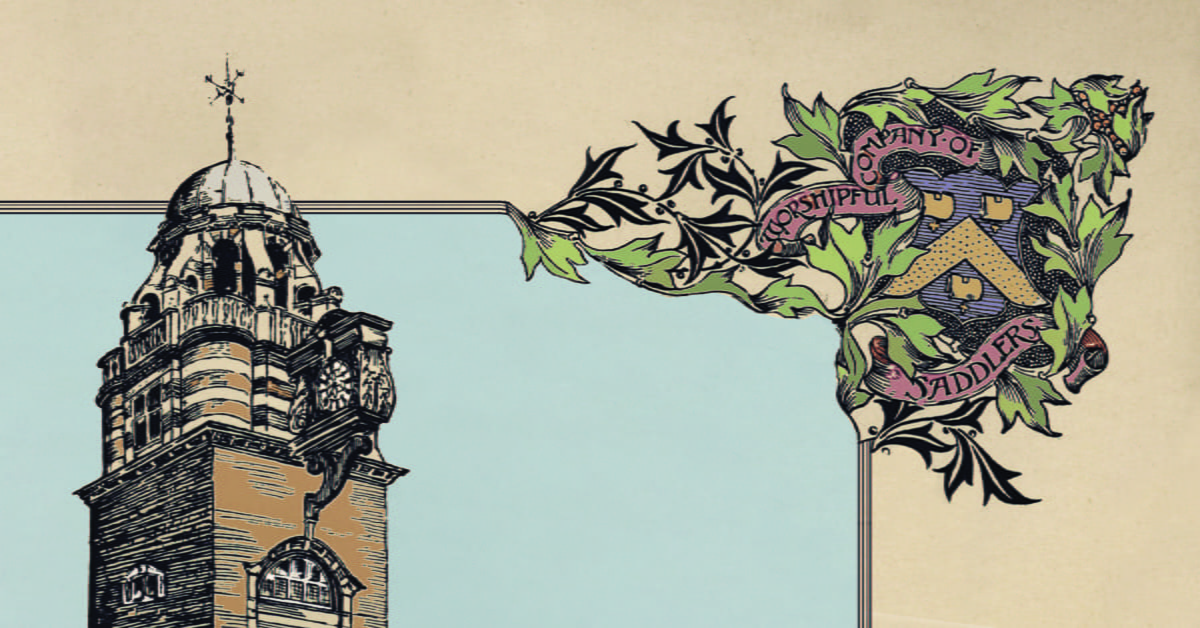One of City’s longest-standing partnerships has been with The Worshipful Company of Saddlers. The livery company has been providing financial support to City from its inception as the Northampton Institute in the 1890s. As the below letter from 1891 shows, they were particularly quick off the mark – the first cheque arrived before the clerk had a bank account in which to deposit it!
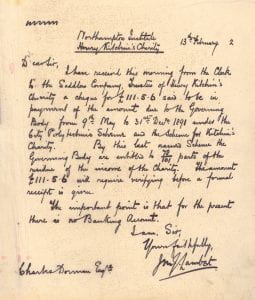
The source of these funds is the charity of Robert Kitchin, a warden of the Company in the 16th century. Upon his death in 1594, Kitchin left a perpetual income from property to be administered by the Company, stating that “every Sunday in the year, before noon, forever,” twelve poor parishioners of St Ethelbridge should be given twelve pence each, and that fifteen shillings and fourpence should be given “every year, yearly, forever” to fund ongoing maintenance of the parish church, St Ethelburga-the-Virgin within Bishopsgate. Though a modest building, the church has a storied history, and some of the 15th-century fabric remains to this day.

Dwindling residential numbers in the three-acre parish meant that, by the 19th century, fulfilling Kitchin’s original directions was no longer tenable. In 1891, the Charity Commission agreed that 78/101sts of the proceeds of the fund should be given to the Northampton Institute, which had a mission to improve the lives of “young men and women belonging to the poorer classes.” The remaining 23/101sts were to be paid to St Ethelburga’s. A modified version of this scheme persists to this day.
In return for their support, and as a mark of the close ties between the two organisations, the Saddlers were granted a seat on the Governing Body of the Institute. The first person appointed to this seat was Lt. Gen. John Wimburn Laurie, Master of the Company. Laurie’s 30-year military career saw him serve in conflicts from the Crimean War (1853-56) to the Serbo-Bulgarian War (1885). After his time in service, he was returned as a conservative MP for the Welsh seat of Pembroke and Haverfordwest in the 1895 and 1900 general elections, and appointed a Companion of the Order of the Bath, making him a prominent figure in Victorian society.

Since these early days, the Company has continued to make contributions to City via Kitchin’s charity. One of the most prominent was the Saddlers’ Sports Centre, for which the Saddlers gifted £150,000 in 1971 (equivalent to over £2,000,000 today). The state-of-the-art Centre had a flexible layout, with a 900m² main hall that facilitated sports from badminton to archery. The Centre also featured a sauna and outdoor climbing wall, and was the first in Britain to use Uni-Turf flooring, which supported the use of needle-spike shoes for athletics events.
The editor of Quest, City’s magazine, wrote that “in no way more appropriately could [the Company] have helped future generations of students.” This prediction has so far been borne out; the Centre is still in use as the Saddlers Sports Hall.
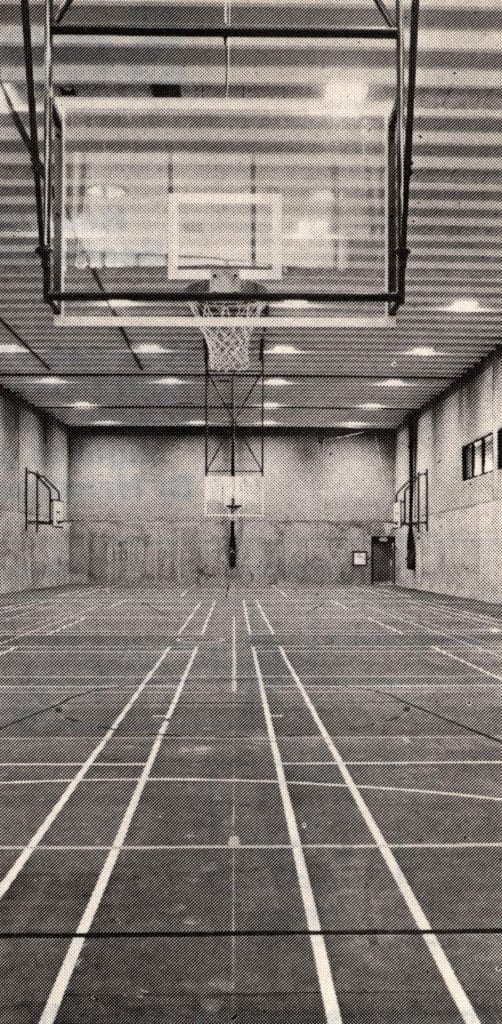
The Saddlers have also made generous contributions to the Student Union, granting £4,300 towards the redevelopment of the union bar (equivalent to roughly £25,000 today). In honour of this, the Union named the bar after the Company. The Saddlers’ Bar was opened in 1978, with the first pint being pulled by Alan Loader Maffey, 2nd Baron Rugby, who was Master of the Saddlers Company at the time.
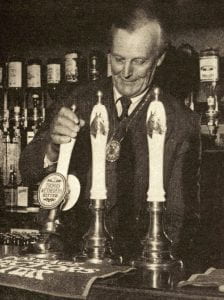
With the previous Union bar at City being a place “where drinking was more a form of endurance than a pleasurable experience,” the opening of the Saddlers’ Bar was welcomed by many students at City. The Saddlers’ was the ‘prestige bar’ at City (there was also a ‘functions bar,’ also opened in 1978, complete with “full disco facilities”).
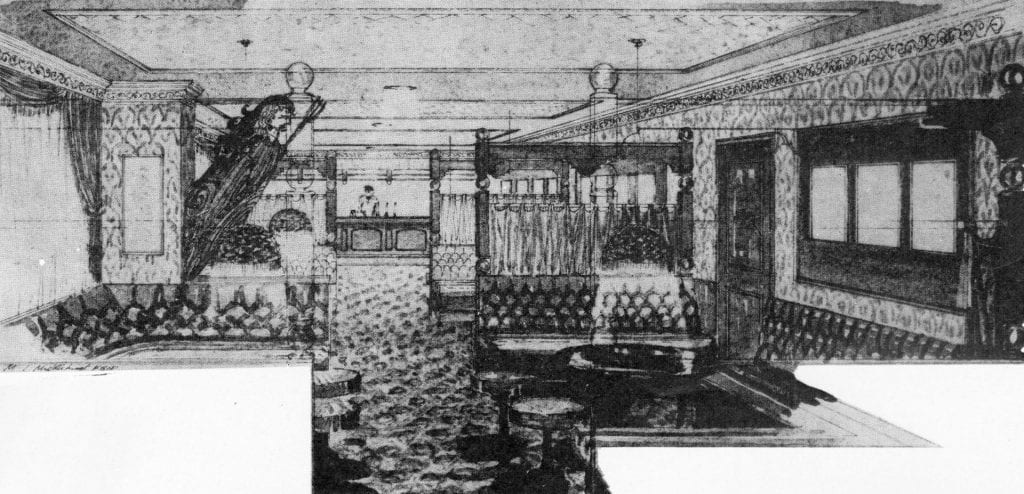
The Saddlers’ was styled after a traditional Victorian pub, with buttoned-tufted leather booths, dark wooden furniture, and “real glasses” instead of plastic ones. Despite several renamings and relocations over the years, the bar has been in continuous operation ever since, and is currently known as City Bar.
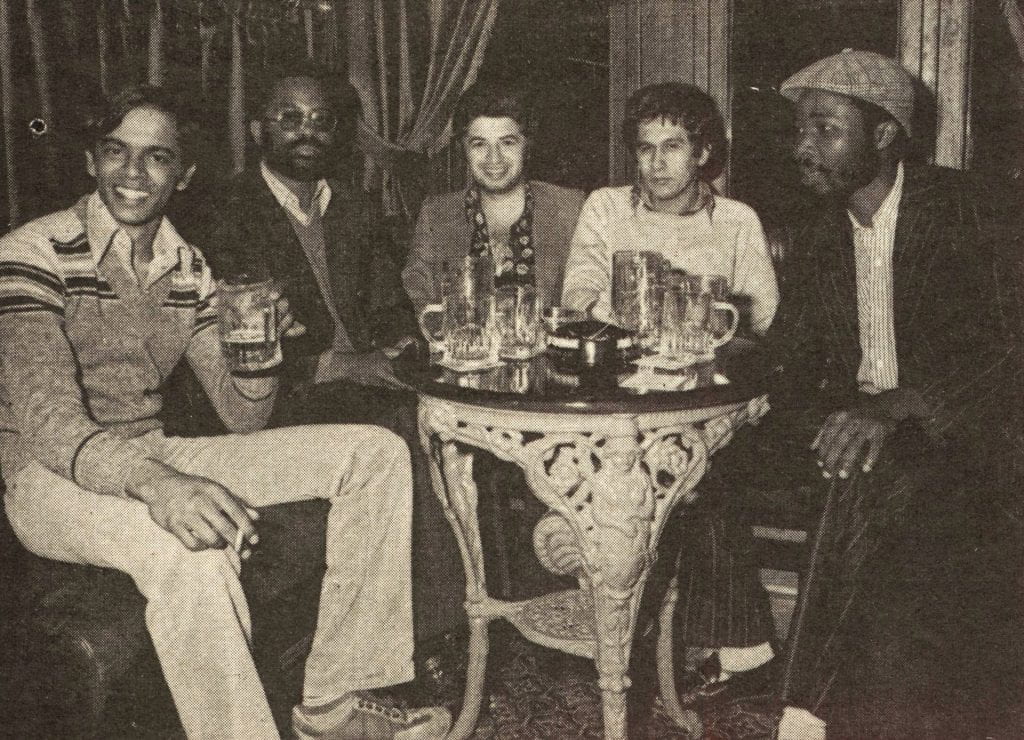
More recent contributions have included funding for the first computer link between the main university computer facilities and City’s two halls of residence, which was completed in 1987, and funding for an alumni database in 1991.
City is hugely grateful for our close relationship with our friends at the Worshipful Company of Saddlers over the last 130 years. Long may it continue.
